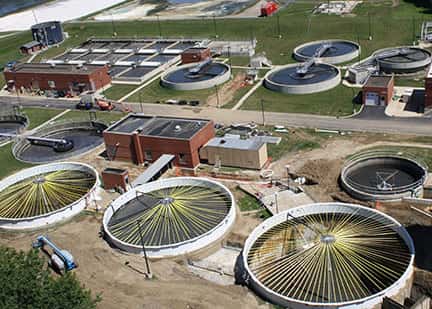 Anaerobic digestion and renewable natural gas (RNG), long a popular solution in Europe, has become an increasingly attractive alternative method of supplying natural gas to hungry U.S. markets. Ohio is a major player in this burgeoning RNG industry, wringing natural gas and compressed natural gas (CNG) that can be used for transportation from farm, wastewater and food wastes.
Anaerobic digestion and renewable natural gas (RNG), long a popular solution in Europe, has become an increasingly attractive alternative method of supplying natural gas to hungry U.S. markets. Ohio is a major player in this burgeoning RNG industry, wringing natural gas and compressed natural gas (CNG) that can be used for transportation from farm, wastewater and food wastes.
‘There are three primary issues affecting our quality of life today: food, water and energy,’ says Mel Kurtz, president of Cleveland-based quasar energy group. ‘We can do something about energy right now. Our company can make the equivalent of 25,000 gallons of fuel a day from waste materials – today.’
quasar energy group currently operates eight anaerobic digestion systems in Ohio, with an additional three under construction. The company also operates public CNG fueling stations in Columbus, Zanesville and Wooster, Ohio, and a private CNG fueling station in Cleveland.
‘Businesses and families today are concerned about their transportation costs,’ Kurtz says. ‘Having the option of using CNG as their fuel gives them control over their quality of life. We have that capability now.’
Anaerobic digestion is a process in which microorganisms break down organic material in the absence of oxygen, creating biogas. This biogas can be used for electricity, pipeline-quality natural gas and motor vehicle fuel (CNG). quasar's anaerobic digestion system utilizes organic waste products such as crop residuals, manure, food waste, fats, oils and greases, personal care products, bio-based lubricants and municipal wastewater.
Established in 2006, quasar relocated its engineering and laboratory offices in 2008 to the Ohio State University's Agricultural Research and Development Center (OARDC) campus in Wooster to collaborate with the largest university ag-bioscience research center in the nation. Together, quasar and OARDC established a farm digester on the site, before beginning construction of industrial digesters around the state. Today, quasar's new industrial digesters use components primarily sourced from U.S. suppliers, with 76% of components coming from Ohio-based companies.
The original product produced from the quasar industrial digesters was renewable electricity. ‘We faced some restrictive regulations in providing our own renewable electricity,’ Kurtz says. ‘Clean Fuels Ohio grant funding allowed us the opportunity to use this cleaned biogas as an alternative motor vehicle fuel. We built a CNG fueling station in Zanesville and introduced this technology to the nearby Appalachian region. At the same time, local universities like Zane State College have taken an interest in offering CNG station maintenance and vehicle conversion courses.’
The company faced another challenge in promoting conversion of vehicles to CNG. Because conversion kits were not yet available for most vehicles, the company worked with collaborators across the state to design, install and test vehicle conversions. At the same time, EPA emissions testing was not readily available for CNG vehicles. The process focused on approving the conversion kit, and not testing actual emissions.
‘These restrictions have made compliance a much more complex process, which inherently inhibits the growth of this industry,’ Kurtz says.
Each of quasar's industrial digestor facilities can process about 75,000 tons of waste a year. Zanesville can process 125,000 tons, resulting in production of about 3,500 gallons of fuel a day from just one facility. In total, the company will be able to process about 400,000 tons of waste annually.
‘These are things that would otherwise be incinerated, and we are making fuel instead,’ he says.
quasar's own corporate fleet of 29 CNG vehicles includes five semi-tractors. In addition, companies such as Sidwell Materials Inc., Chesapeake, Giant Eagle, Ford Motor Co. and Kurtz Brothers Trucking are using the CNG refueling stations, as is an influx of natural gas vehicle owners from the general public.
‘We are saving $11,000 in fuel costs each month by converting to CNG. It's less expensive, clean burning, better for the environment and available in Ohio. Looking back, it wasn't a difficult decision,’ Kurtz says.
Kurtz explains that businesses must look at how much fuel they use, how do they use it, and how can they bring CNG vehicles into their business (either new or converted vehicles). The next consideration is whether to build an on-site CNG facility or use a public facility.
‘If you want to be comfortable [in your decision], convert one vehicle to CNG,’ he says. ‘If you want to be practical, do three. As you get comfortable, you'll wonder why you didn't do it in the first place.’
Sam Spofforth (sam@cleanfuelsohio.org) is executive director of Clean Fuels Ohio, a member organization of the U.S. DOE's Clean Cities. Videos about the quasar RNG initiative can be found here and here.
Photo: An aerial view of quasar's Wooster, Ohio, facility.






